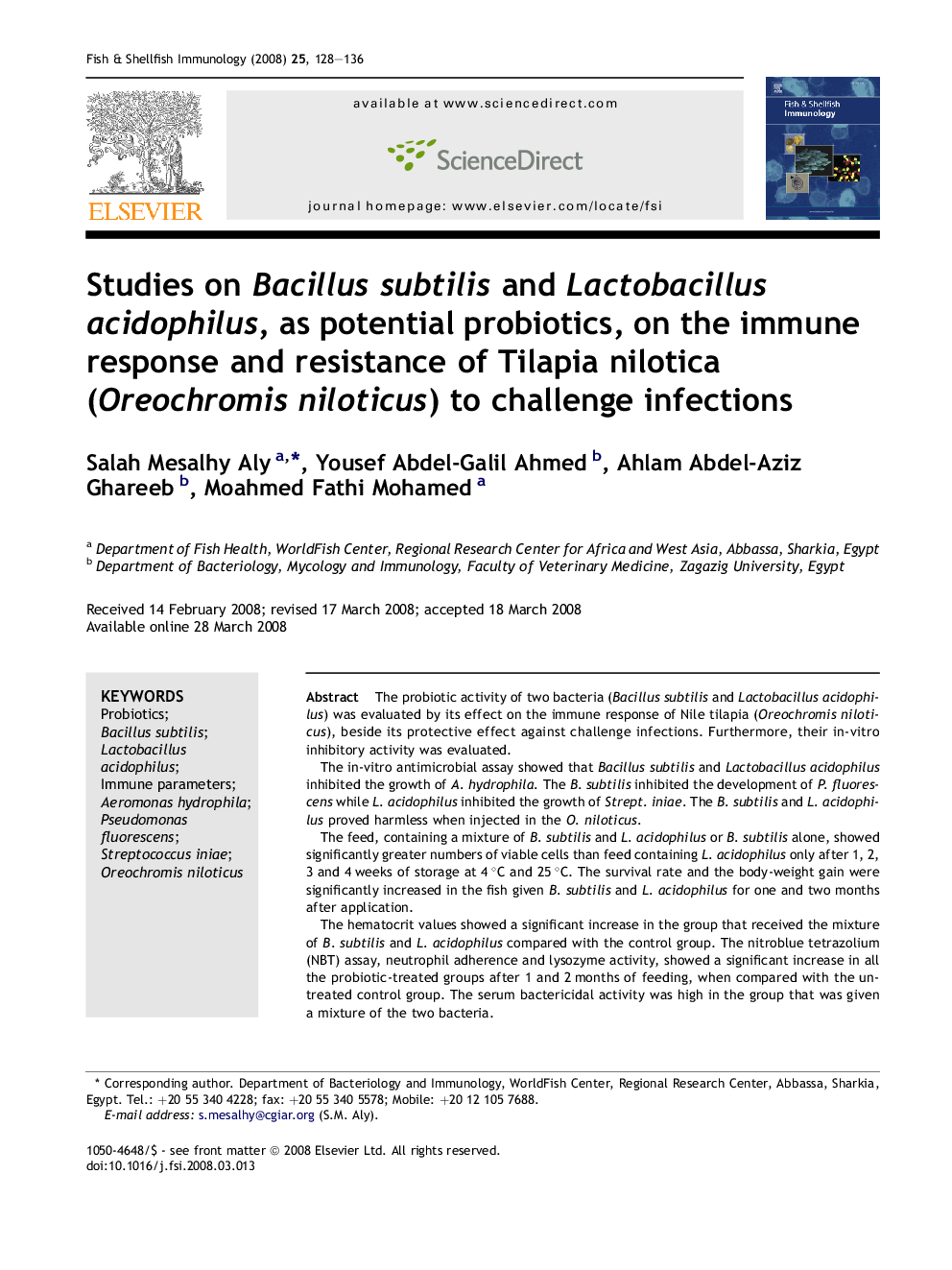| Article ID | Journal | Published Year | Pages | File Type |
|---|---|---|---|---|
| 2433143 | Fish & Shellfish Immunology | 2008 | 9 Pages |
The probiotic activity of two bacteria (Bacillus subtilis and Lactobacillus acidophilus) was evaluated by its effect on the immune response of Nile tilapia (Oreochromis niloticus), beside its protective effect against challenge infections. Furthermore, their in-vitro inhibitory activity was evaluated.The in-vitro antimicrobial assay showed that Bacillus subtilis and Lactobacillus acidophilus inhibited the growth of A. hydrophila. The B. subtilis inhibited the development of P. fluorescens while L. acidophilus inhibited the growth of Strept. iniae. The B. subtilis and L. acidophilus proved harmless when injected in the O. niloticus.The feed, containing a mixture of B. subtilis and L. acidophilus or B. subtilis alone, showed significantly greater numbers of viable cells than feed containing L. acidophilus only after 1, 2, 3 and 4 weeks of storage at 4 °C and 25 °C. The survival rate and the body-weight gain were significantly increased in the fish given B. subtilis and L. acidophilus for one and two months after application.The hematocrit values showed a significant increase in the group that received the mixture of B. subtilis and L. acidophilus compared with the control group. The nitroblue tetrazolium (NBT) assay, neutrophil adherence and lysozyme activity, showed a significant increase in all the probiotic-treated groups after 1 and 2 months of feeding, when compared with the untreated control group. The serum bactericidal activity was high in the group that was given a mixture of the two bacteria.The relative level of protection (RLP) was significantly higher against A. hydrophila, in the bacterial mixture treated group and against P. fluorescens in the L. acidophilus treated group, after one month of the feeding trial. A significantly higher RLP, against A. hydrophila or P. fluorescens, was noticed after 2 months of the feeding trial in the group given a mixture of the two bacteria, and against Strept. iniae in the group fed a diet containing L. acidophilus.
